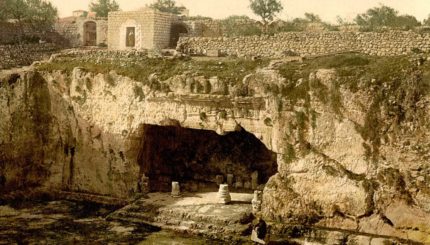On July 27, the 29th of Tammuz, I will observe the 909th
yahrtzeit
of Rabbi Shlomo Yizhaki, better known as Rashi. Normally, an author has no deadline to finish her first novel, but I was determined to get Volume One of
Rashi’s Daughters
out in July 2005, to take advantage of all the hoopla I expected would commemorate Rashi’s 900thyahrtzeit. As it turned out, I was the only hoopla, but who knows if my historical trilogy about Rashi’s daughters would ever have been published without that impetus?
While Rashi is justifiably celebrated for his Bible and Talmud commentaries, few Jews know that it was under his authority and that of his Ashkenazi colleagues that Jewish women in medieval France enjoyed power over their own lives that their Sephardic sisters in the so-called “golden age” of Spain could only imagine. These were the days when Jews enjoyed a monopoly on long-distance trade, many traveling as far as the Levant. Jewish merchants became welcome visitors to French estates, buying the estates’ surfeit produce and selling them imported goods. By necessity, Jewish wives assumed the responsibilities of running the home and managing the family business while their husbands were away.
Even before Rashi was born, Jewish women were already the beneficiaries of edicts by Rabbeinu Gershom, which gave them previously unheard-of power in marriage. These prohibited a man from both taking a second wife and divorcing his wife without her consent. In addition, a woman was allowed to initiate divorce and receive a
get
, even against her husband’s will, and Jewish merchants were expected to give their wives a conditional get when they left on a journey in order to protect them from becoming agunot (chained wife).
Marriage was not the only arena in which the Ashkenaz Jewish woman asserted herself. Many sought to increase their ritual participation by fulfilling those ritual obligations which, according to the Mishnah, women were not obligated to perform—
mitzvot aseh she-hazeman grama
, the “time-bound positive commandments.” Obvious examples include blowing and hearing the shofar (at Rosh Hashanah), and taking the lulav and dwelling in the sukkah (at Sukkot). Others, perhaps less obvious, are reciting the Shema (said in the morning and at night) and wearing tefillin or tzitzit (worn in the daytime).
In Sephardic lands, these ritual exemptions became outright prohibitions, but the women in Rashi’s community not only insisted on performing these mitzvot from which they were exempt, they wanted to say the blessings for them as well. Rashi’s teacher, Rabbi Isaac haLevi, taught that “We do not stop women from saying the blessing over lulav and sukkah … since she performs the mitzvah, she cannot do so without the blessing.” It is interesting that they use the phrase “we do not stop women” rather than “women are permitted.” This suggests that the women took these mitzvot upon themselves and insisted on reciting the blessing as well.
There was yet another area affecting women in which Rashi argued against society’s restrictions. When it came to limitations on a woman while she was
niddah
(menstruating), Rashi made it clear these proscriptions applied only between husband and wife. In a time when superstitions about menstruation abounded (a scholar was forbidden to greet a niddah because the utterances of her mouth were unclean; a man shouldn’t walk behind a niddah since even the dust beneath her feet caused impurity; an untimely death resulted from walking between two menstruating women), a responsum of Rashi declared that, “Dishes which the niddah touches are clean, even for her husband. For people today are already impure from graves, houses of dead people, and corpses, and we will not be purified until the days of the Messiah. Therefore it is permitted to touch and use whatever the niddah touches.” He continues, “Niddah prohibitions are only to prevent sin between her and her husband; impurity does not pertain here.” Thus, while many of his Sephardic contemporaries were forbidding a niddah to even enter the synagogue, in Troyes, France the niddah “attends services as usual, prays as usual, and if she is accustomed to study words of Torah, she studies as usual.”
Finally—women studying Torah. Rashi, whose own daughters learned Talmud and Torah, was among many rabbis who obligated a man to teach his daughter those texts concerning the mitzvot, for “otherwise how can she observe them properly.” Sadly this golden age for medieval Ashkenaz women was short-lived. When the Black Death swept Europe, people held witches responsible, which tainted all learned and presumptuous women. It would take five hundred years before Jewish women would again reach the heights they attained in Rashi’s time, and in the case of initiating divorce, we are still waiting.
For those who want to learn more, I recommend these recent books:
Pious and Rebellious: Jewish Women in Medieval Europe
by Avraham Grossman
Mothers and Children: Jewish Family Life in Medieval Europe
by Elisheva Baumgarten
Like this post? Join the conversation through MyJewishLearning’s weekly blogs newsletter.
Ashkenazi
Pronounced: AHSH-ken-AH-zee, Origin: Hebrew, Jews of Central and Eastern European origin.
Avraham
Pronounced: AHVR-rah-ham, Origin: Hebrew, Abraham in the Torah, considered the first Jew.
Sephardic
Pronounced: seh-FAR-dik, Origin: Hebrew, describing Jews descending from the Jews of Spain.
Shema
Pronounced: shuh-MAH or SHMAH, Alternate Spellings: Sh'ma, Shma, Origin: Hebrew, the central prayer of Judaism, proclaiming God is one.
Talmud
Pronounced: TALL-mud, Origin: Hebrew, the set of teachings and commentaries on the Torah that form the basis for Jewish law. Comprised of the Mishnah and the Gemara, it contains the opinions of thousands of rabbis from different periods in Jewish history.



